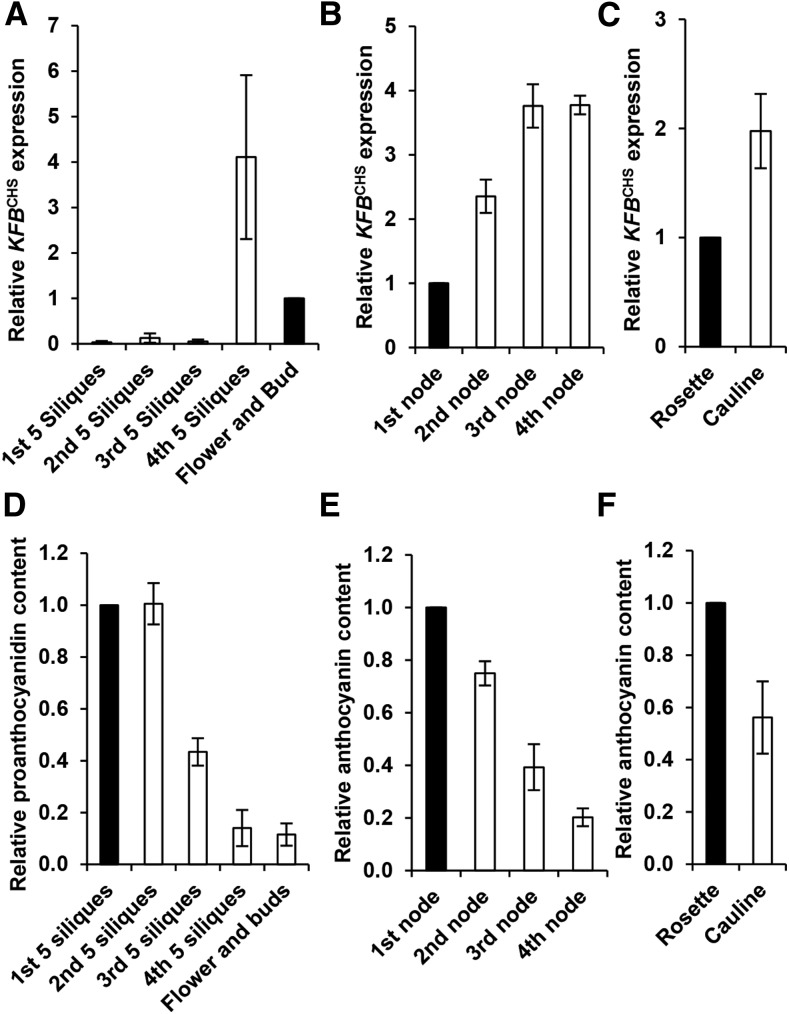Figure 5.
Developmental Expression of KFBCHS and the Accumulation Levels of Anthocyanins and/or Proanthocyanidins in Different Tissues.
Six-week-old plants were grown under white light with a fluence rate of 104 ± 5 µmol·m−2·s−1 and a 16-h-light/8-h-night regime at 22°C.
(A) to (C) RT-qPCR analyses of the expression levels of KFBCHS in developing siliques and flowers/buds (A), in stem internodes from the bottom (1st node) to the top (4th node) of the inflorescence (B), and in rosette and cauline leaves (C). Every fifth silique from bottom to top of the inflorescence was grouped together, representing one growth stage in (A). The expression levels detected in the flowers/buds (A), the first basal stem internode (B), and the rosette leaves (C) were set as “1.” Data represent means ± sd of three biological replicates. Each replicate represents the mixed materials of nine 6-week-old plants.
(D) Proanthocyanidin contents in the developing siliques and flowers/buds. The average absorbance at 550 nm in the first group of siliques (the oldest) was set as “1.” Data represent means ± sd from three biological replicates. The biological replicate was defined as in (A).
(E) and (F) Anthocyanin contents in the different stem internodes (E) and in the rosette and cauline leaves (F). The contents quantified in the rosette leaves (∼43 µg/g FW cyanidin 3-O-glucosides) and in the first stem internode (∼55 µg/g FW) were set as “1,” respectively. Data represent means ± sd of three biological replicates. The biological replicate was defined as in (B) and (C).

